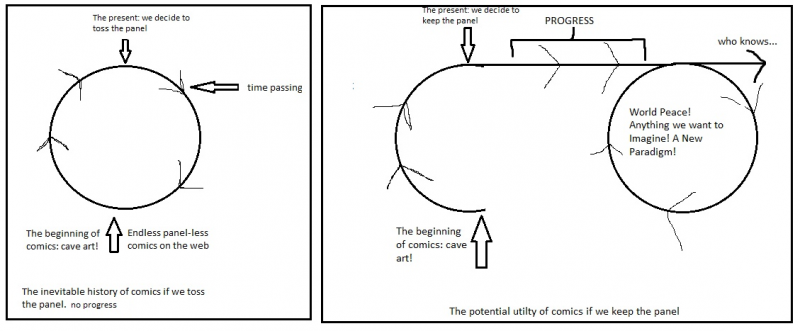Serendip is an independent site partnering with faculty at multiple colleges and universities around the world. Happy exploring!
what can comics do?
I liked our discussion at the very end of class today about the importance of “drawing a line” to indicate that something is special and unique instead of expanding definitions to include everything. If I remember correctly, this conversation sprung from our discussion about the end of Scott McCloud’s second book. I understood his argument to be something like this: in order to maintain comics’ relevance in the digital age, artists have to remove panels and embrace the infinite. We talked briefly about how removing panels from comics makes them reminiscent of the cave drawings from which they arose.
If McCloud is right, and the future of comics relies upon removing the panel, then their evolution serendipitously ends up right back where it started. This is nice for my brain to think about. I like circles.
But, what if McCloud is wrong? What if the lines and the boundaries (the panels!) we’ve drawn around the genre of comics are important for the future progress of this art, of the world even? I think they are. In order for comics to retain their power, the interval which is created by the panel must be retained. My initial thoughts after reading Understanding Comics were something along the lines of: “WOW! Comics might be capable of a whole lot more than keeping me entertained.” This excitement stemmed from the ideas of closure and abstraction that McCloud highlighted in his book. I’m still struggling to explicitly relate these lessons to a broader blueprint for how to change the world (and I’m concerned about stereotypes), but I’m convinced that the strucutre panels provide can be transformative. Here are my thoughts in picture form:



